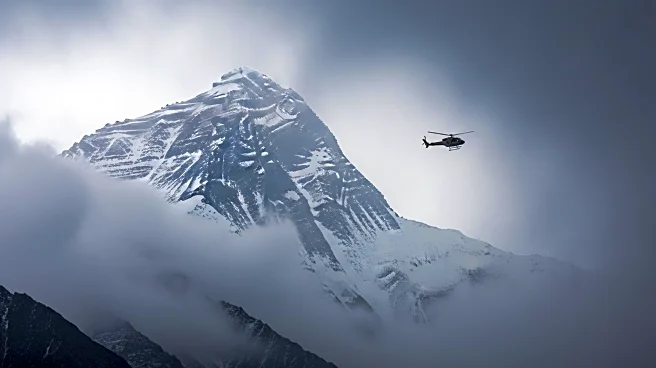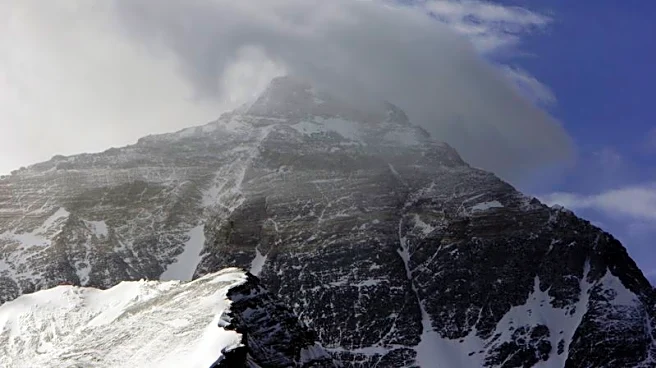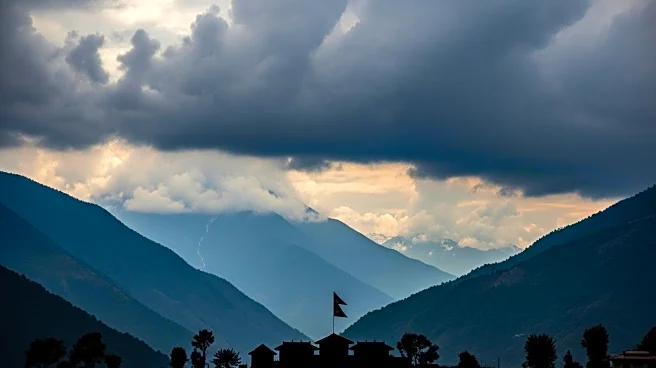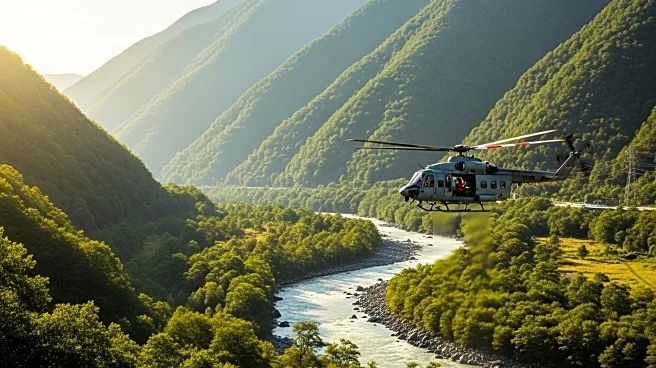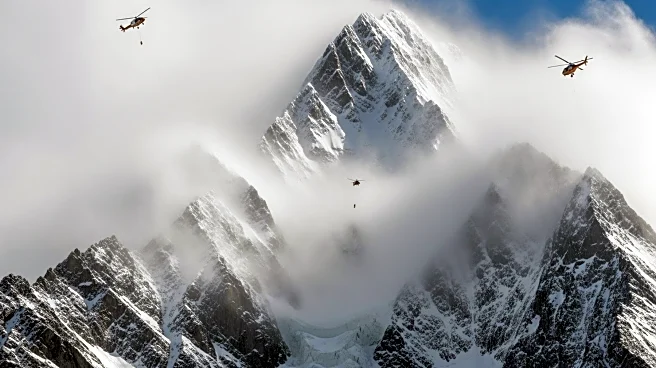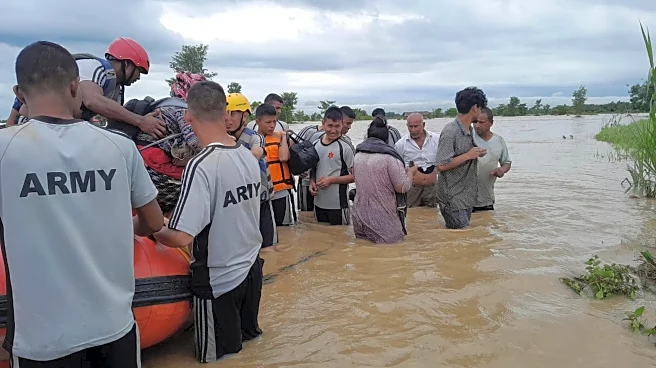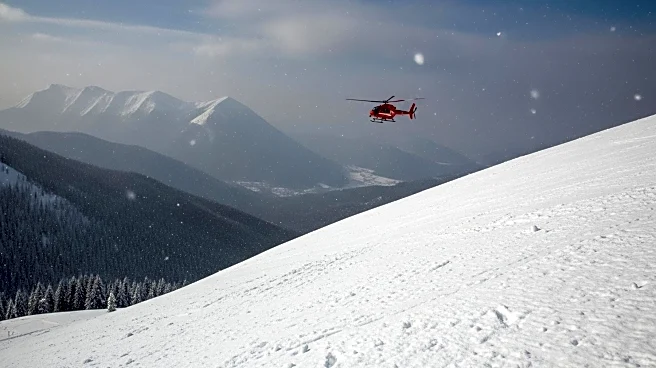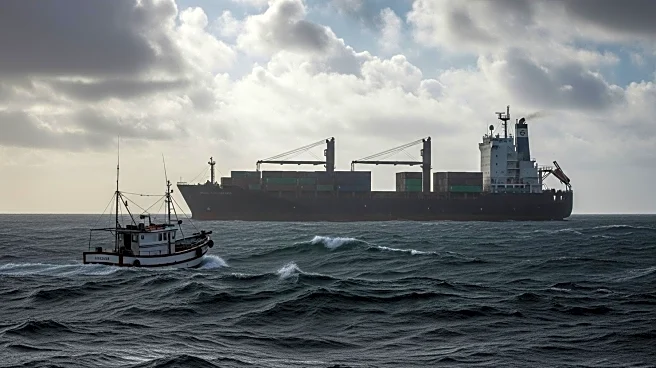What's Happening?
A severe blizzard has trapped nearly 1,000 adventurers on Mount Everest, creating a critical situation at 16,000 feet. The storm, which began on Friday, has caused heavy snowfall, collapsing tents and leading to cases of hypothermia among climbers. Rescue teams, including Tibet's Blue Sky Rescue, have managed to save approximately 350 individuals, but many remain stranded. The Tingri County Tourism Company has halted ticket sales to the mountain due to the dangerous conditions. The storm has also triggered landslides and flash floods in Nepal, resulting in at least 47 fatalities, and in India, where nine people have been reported dead.
Why It's Important?
The situation on Mount Everest highlights the inherent risks of high-altitude climbing, exacerbated by unpredictable weather conditions. The storm's impact extends beyond the mountain, affecting surrounding regions with deadly landslides and floods. The rescue efforts underscore the challenges faced by emergency services in such extreme environments. The incident may prompt a reevaluation of safety protocols and access regulations for climbers, as Nepal has already introduced new guidelines to limit the number of climbers on the mountain. The broader implications include potential changes in tourism policies and increased focus on climber safety.
What's Next?
Rescue operations will continue as authorities strive to reach and evacuate the remaining trapped climbers. The ongoing storm and challenging terrain will complicate these efforts. In the aftermath, there may be discussions on improving safety measures and infrastructure to better handle such emergencies. The incident could lead to stricter regulations on climbing permits and increased scrutiny of expedition preparedness. Additionally, the affected regions in Nepal and India will need to address the aftermath of the storm, including recovery and rebuilding efforts.

